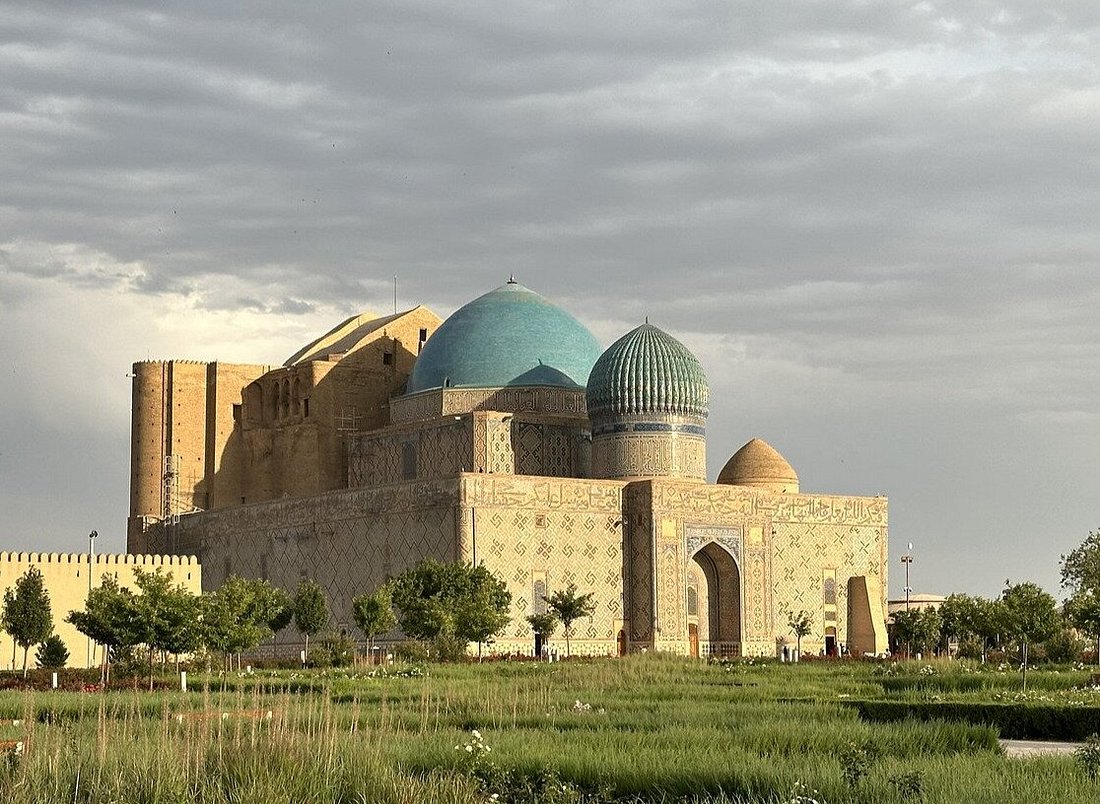
The Mausoleum of Khoja Ahmed Yasawi is one of the most significant architectural and cultural landmarks in Central Asia, located in the city of Turkestan, southern Kazakhstan. This monumental structure is a testament to the region's rich history and the influence of Islamic culture in the area.
Khoja Ahmed Yasawi, born in 1093, was a renowned Sufi poet and philosopher whose teachings and writings had a profound impact on the spread of Islam in Central Asia. The mausoleum was commissioned by Timur (Tamerlane), the ruler of Central Asia, between 1389 and 1405. It was intended to replace an earlier 12th-century mausoleum and serve as a grand tribute to the spiritual leader. However, construction was halted in 1405 following Timur's death and was never completed.
The mausoleum is a rectangular structure standing at 38.7 meters tall and covering an area of 0.55 hectares. It is one of the largest and best-preserved examples of Timurid architecture, featuring innovative spatial arrangements, vaults, domes, and intricate decorations. The building's design includes 35 rooms, each serving different functions such as a library, mosque, dining hall, and bathhouse. The main hall, known as Kazandyk, is covered by a conic-spherical dome, which is the largest of its kind in Central Asia.
Despite its unfinished state, the mausoleum provides valuable insights into the construction methods of the Timurid period. Original wall paintings, alabaster stalactites (muqarnas), and glazed tiles with geometric patterns and epigraphic ornaments are still visible. The structure's exterior and interior walls feature fine Kufic and Suls inscriptions, as well as texts from the Quran.
The mausoleum's cultural significance extends beyond its architectural beauty. It is closely associated with the diffusion of Islam in Central Asia through the teachings of Sufi orders and Timur's political ideology. The site also includes the Hilvet Underground Mosque and the ancient settlement of Kul'tobe, further enriching its historical context.
In 2003, the Mausoleum of Khoja Ahmed Yasawi was inscribed on the UNESCO World Heritage List. It is recognized for its outstanding universal value as an exceptional example of Timurid architecture and its contribution to the development of Islamic religious architecture. The mausoleum is protected by national laws and managed by the Committee of Culture of the Ministry of Culture and Information of Kazakhstan.
Today, the Mausoleum of Khoja Ahmed Yasawi stands as a symbol of Kazakhstan's cultural heritage and continues to attract visitors from around the world. Its towering turquoise dome and intricate decorations make it a must-see destination for anyone interested in history, architecture, and spirituality.




































